Safeguard your brand in the UK
Trade Mark Most Asked Questions
Straightforward, fairly priced trade mark registration
Packages & Cost
Our packages for those who wish to protect their brands in the UK.
The Process
To register a trade mark across the entire European Union, the most efficient method is to file a European Union Trade mark (EUTM) application. This application covers all 27 EU Member States. The registration process typically takes about 4-5 months, so long as there are no objections.
The EUTM provides protection in every EU member state. A single similar trademark in any member state can lead to the rejection or cancellation of your application.
If accepted your ™ is registered for 10 years

Registering a Trade Mark
The process of registering a trade mark can initially appear intricate and overwhelming.
However, it is recommended for applicants to gain a basic understanding to prevent complications or rejection of their application. The process varies from one country to another but typically involves the following stages:
1. Evaluation of the application by the intellectual property office,
2. Opposition period, during which owners of existing trade marks can dispute the application and potentially lead to its rejection. (See our FAQs on Oppositions)
3. Issuance of the trade mark certificate.
The registration process is simple.
We undertake a trade mark search for you, if this is positive and shows that your mark would not be infringing on another’s registered mark and it contains registerable contents we will then file the trade mark application for you.
We will need to know who the owner of the mark will be and the classes ( industries) that you would like to protection in.
Once filed the Intellectual Property Office (IPO) will consider the application, they will evaluate the distinctiveness of the mark. If the mark is not unique enough for a given category, it could be dismissed by the trade mark office. If the mark meets this criterion, they look to see whether an identical trade mark isn’t registered already, which could be a reason for dismissal as well.
The mark is then published (for 2 months) giving others the opportunity to oppose the application. If there is no opposition the mark will be registered.
If there is opposition, the opposition could be for some of the goods or services or the entire application. Opposition proceedings would commence and statements and evidence by the applicant and the opposition would be filed. A hearing can be arranged and submissions are provided, the UKIPO then makes a decision.
Generally, we can file a trade mark within one week of your invoice being paid, so long as the clearance searches have been undertaken first. The registration process may take over a year, depending on a particular country. However, your brand acquires some protection from the filing date.
If you are a resident or citizen of a country, generally, you can file a trade mark yourself. Otherwise, you will need a representative.
In the UK, individuals filing applications have over 3x higher failure rates than those agents of the IPO like National Business Register.
If applying without legal representation in your home country, generally, no additional documents are required beyond the details in the application, such as the owner’s legal name, address, and nationality. For businesses, company details must be provided.
If applying through a legal representative, you may need to sign a Power of Attorney, just authorising the agent to act on your behalf in this matter.
The registration of trade marks and other intellectual property is handled by the Intellectual Property Office, usually a branch of the Department of Commerce in each country. In the EU, you can register with a national IPO for country-wide protection or with the European Union Intellectual Property Office for EU-wide protection.In the US, specific state-level offices may also be involved.
Be aware of scams posing as government bodies with names similar to the IPO you are registering with, which may send fraudulent invoices for additional payments. Always verify the correct name and abbreviation of the office handling your registration.
While the primary criteria for trade mark registration, such as distinctiveness and lack of similarity to existing trade marks, are consistent across jurisdictions, the specific rules and processes can vary. The process generally involves an examination period followed by an opposition period, but the length and thoroughness of these stages differ between countries.
Countries also follow either ‘first-to-use’ or ‘first-to-file’ systems for granting priority rights. For example, the UK, EU and China follow a first-to-file system, whilst the US follows a first-to-use system. The US has additional distinctions, such as marks used in commerce versus those intended for future use, and requires a specimen of use.
The IP Office evaluates applications based on two main criteria:
- Distinctiveness: The trade mark must be unique and identifiable by consumers.
- No similarity conflicts: The trade mark must not be confusingly similar to existing registered trade marks.
If these criteria are not met, the application is likely to be refused. If refused, you may attempt to prove acquired distinctiveness through use. For example over a period of years you may have built up a brand that is associated with a word more than the strict meaning of the word itself.
Trade marks serve to differentiate the origin of goods/services, unlike business names. Therefore, trade marks must have qualities that associate them with specific products or services. Descriptive marks may be registered as figurative trade marks to increase distinctiveness.
A trade mark certificate is an official document confirming your trade mark registration with an IP office. It includes the registration number, the trade mark owner, the classes of registration, and the date of entry in the trade mark registry.
Upon receiving your trade mark certificate, the registration process is complete, and you can start using the ® symbol with your registered brand name/logo. Electronic versions are typically provided, but paper versions can be requested, usually for a fee.
Registration processes in different jurisdictions are not interconnected. Approval in one jurisdiction does not impact registration timelines in others. However, you can claim a “priority right” if you file an identical application in another country within six months of the first. This gives your second application the same filing date as the first, effectively starting protection earlier.
In first-to-file systems, the filing date grants priority rights. The trade mark owner can prevent others from using the same or a confusingly similar trade mark filed afterward. Countries using this system include, the UK, the EU Germany, Japan, and China.
In first-to-use systems, priority rights go to the first entity to use the mark in commerce, provided they can prove it. Examples include the US, Canada, and Australia.
Filing a trade mark application gives you priority rights over anyone filing the same or a confusingly similar trade mark afterward. However, in some jurisdictions, someone may claim priority if they used the mark in commerce first and can prove it. Generally, you are protected against outright theft.
A priority right allows an applicant to use the filing date of an earlier foreign trade mark application as the effective filing date for a subsequent application in another country. This helps secure earlier protection and prevent others from filing similar marks during the interim.
While the priority right allows for an earlier filing date, you still need to meet the registration requirements in each country where you seek protection. Consult a trade mark specialist to understand the specifics in relevant jurisdictions.
Yes, the intellectual property office can dismiss a trade mark application, but typically not without issuing an office action detailing the issues. The applicant can address these issues within a specified timeframe. If unresolved, the application will be marked abandoned and refused.
No, the IP Office does not provide refunds for dismissed applications. It is essential to follow all rules and criteria for registration. Fees paid include government (administrative) fees and service fees (for legal representatives, if applicable). If you decide not to respond to an office action, all previously paid fees are forfeited.
There is no guarantee of successful registration, but research can help establish your chances. Ensure your mark shows sufficient distinctiveness and check for similar registered trade marks. We strongly recommend a detailed search taking place ahead of any application. This will consider current marks already registered and whether your proposed mark hits the criteria required by the IPO.
If no identical or similar marks are found, your chances are higher. If similar marks exist, a trade mark attorney can assess the risk and provide advice.
Minimising the risk of refusal involves ensuring your mark is distinctive and checking for existing similar marks, this is why our searches are so important.
Consider registering a logo trade mark instead of a wordmark, as logos with distinct elements are easier to distinguish. Avoid prohibited elements such as flags, official signs, or names of the Royal family in the UK. Check prohibited elements in each jurisdiction individually.
The decision to proceed with registration is ultimately up to the client. If the risk of refusal is due to low distinctiveness, consider adding distinctive elements or registering a logo trade mark instead of a wordmark. If the risk is due to existing similar marks, consider modifying your trade mark to increase your chances of successful registration.
No, you cannot change countries during the trademark registration process. A trademark application is filed with the intellectual property office of the selected country. If you decide to pursue registration in a different country, a separate application and new fees will be required. Fees paid for the initial application are non-refundable.
Yes, changing the ownership details, such as the official address of the owner, is relatively simple. You can also transfer ownership to a new owner by signing an agreement between the old and new owners and submitting the necessary documentation to the respective IP office. Fees for this process may vary by jurisdiction, so it’s advisable to consult your legal representative.
Yes, it is possible.
Unfortunately, you cannot add a new class after filing a trade mark application or after registration. Adding a class changes the scope of protection, requiring a re-evaluation of the application. If you wish to cover more classes, you must file a new application with the same brand name or logo, ensuring full protection for your expanded portfolio of goods and services.
In general terms, it is advisable to tie the trade mark’s ownership to an entity that will be using it in commerce. Most often this means applying for a trade mark in the name of the business entity. But there can be merit in owning it separately, it may be that you sell the business but not the registered mark for example.
Yes, you will receive an electronic confirmation with your application (serial) number from the respective IP office. This number allows you to track the progress of your application and can be used, for example, to become an Amazon Brand Registry member. It usually takes a few days for the number to become active.
Upon registration, you will receive a trademark certificate, proving your ownership. You can then use the ® symbol to indicate your brand’s protected status. Your trade mark protects you from copycat attempts in the registered jurisdictions. If you find a confusingly similar brand, you can address the issue amicably or take legal action if necessary.
Similar trade marks may lead to issues such as an “Office Action” or “Opposition” during the application process. An Office Action is an official decision issued during the examination period if a confusingly similar trademark is found. During the opposition period, owners of similar trade marks can challenge your application. Resolving these issues may require negotiation or presenting evidence to the IP office.
Generally, intellectual property offices operate on a first to file – first-come, first-served basis. If the similar trade mark is already registered, they have priority, even if you started trading first. Potential solutions include rebranding, omitting the infringing class, or building a legal case with your representative in the event of an opposition or office action.
Similar brands in different sectors typically do not pose a risk if they do not attract the same customers with related goods or services. However, anyone can challenge your application on absolute grounds if they believe your trade mark is too generic or lacks distinctiveness. Oppositions are less likely if the sectors are unrelated.
A lapsed trade mark from a dissolved company should not pose a threat to your application. An “abandoned” status indicates the owner failed to maintain the application. Without operational status, previous owners cannot file an opposition, making it unlikely to affect your application.
The risk depends on your target market. A similar trade mark registered in China should not affect your registration in the EU or US unless you plan to sell in China. Ensure the company owning the trade mark in China does not hold the same trade mark in your countries of interest.
You generally cannot change applicant information during the examination and publication period. It is advisable to wait until registration is complete before updating any details such as business address or name.
Changes to the product description that affect the goods and services offered may impact the trade mark class and the listed items. Ensure any adjustments do not alter the scope of your protection.
It is likely a scam. Fraudulent organisations often target trade mark applicants with such requests. Verify any payment requests with your legal representative before transferring money, and ensure you know the correct name and abbreviation of the IP office you are dealing with.
Why Trade Mark?

What our clients have said
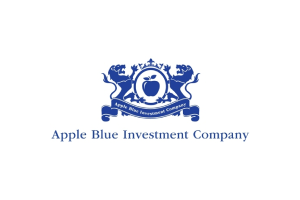


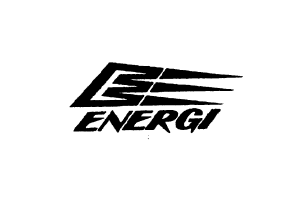
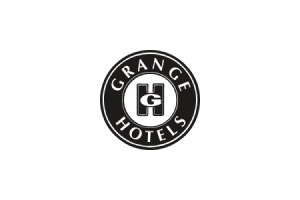
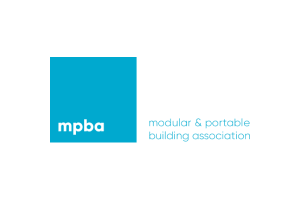

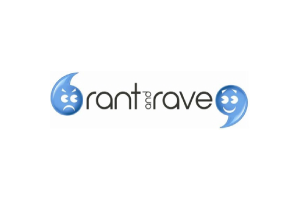
Book your FREE consultation session
Need some advice? Got some burning questions that you want answering?
It only takes two minutes



